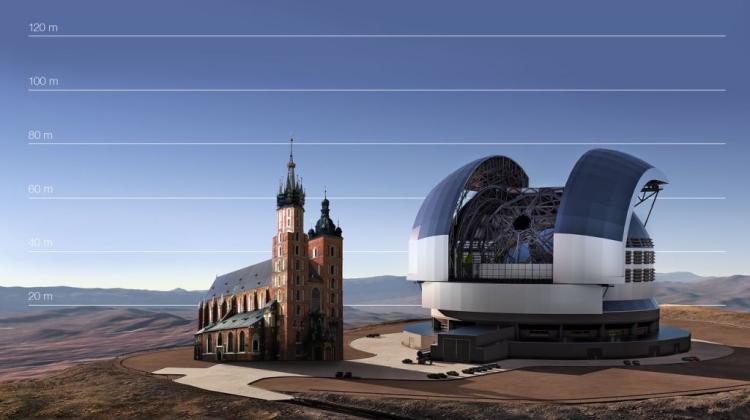The Institute of Nuclear Physics PAS is building a telescope to study gamma rays

Prototype telescope, which enables the study of cosmic gamma radiation, was presented last Monday at the Institute of Nuclear Physics PAS in Kraków. Polish scientists and engineers are partners in an international project with participation of experts from 28 countries.
Gamma rays from space enter the earth\'s atmosphere and produce flashes of bluish light imperceptible to the human eye, that last only a few billionths of a second. Telescopes such as the built in Kraków will be able to record these flashes of light.
"With these devices we have a chance to explain where cosmic rays come from, and study the turbulent phenomena occurring in the Universe" - told PAP CTA team leader at the Institute of Nuclear Physics, Dr. Jacek Niemiec.
SST-1M telescope will be part of a network of about 100 telescopes operating in the world\'s largest gamma-ray observatory in the southern hemisphere. The device presented in Kraków is about 9.5 m long and 5.5 m high, and the canopy on which mirrors will be mounted has a diameter of 4 m. The telescope soon will be fitted with 18 hexagonal mirrors and a special camera consisting of 1.3 thousand silicon photomultipliers. It will be ready next spring.
Dr. Jacek Niemiec emphasised that the prototype telescope had been built by Polish engineers, who developed, its mechanical structure and drive. Specialists from the Jagiellonian University, AGH and the University of Geneva are building a prototype camera for the telescope. The Polish-Swiss research group will build a mini-network of telescopes called SMART, consisting of 3 to 5 small telescopes.
Cherenkov Telescope Array (CTA) is an international project involving researchers from 28 countries. It assumes building two observatories for about 200 million euros, on the northern and southern hemispheres, enabling the observation of the entire surface of the sky.
Each of the observatories will be equipped with different types of telescopes. They will include large telescopes with mirror diameters of approximately s 24 m, medium telescopes with diameters of about 12 m, and in the southern observatory also a network of around 70 small telescopes with diameters of about 4 m.
"Participation in this project is of particular importance for us, because it is the method to experimentally obtain new information on the area of the spectrum of photons (particles of light - PAP) approaching from space. We expect that by entering the new territory, we will see new things, perhaps something groundbreaking"- told PAP director of the Institute of Nuclear Physics PAS, Prof. Marek Jeżabek.
According to the international coordinator of the CTA, Prof. Werner Hofmann, now the researchers are searching for the best location for the southern observatory. Chile and Namibia are being considered.
PAP - Science and Scholarship in Poland
wos/ mki/ gma/ krf/
tr. RL
Przed dodaniem komentarza prosimy o zapoznanie z Regulaminem forum serwisu Nauka w Polsce.

















